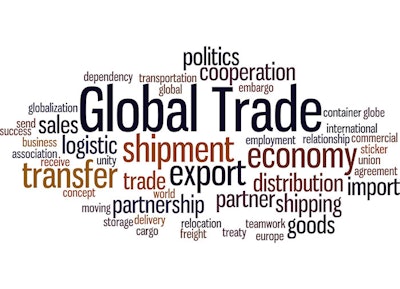
A decade ago, few people would have predicted Cuba and Angola – with a combined population about the size of California – would become two of the top three foreign destinations for U.S. broiler meat in 2017.
This underscores how much the trade landscape can change in a short amount of time and highlights a shift from higher levels of concentration to greater diversification among trading partners. It also raises questions around future patterns and trends.
Historical perspective
A landmark trade deal in the early 1990s resulted in a tidal wave of chicken shipped to the hungry former Soviet Union. Russia became an important export destination, with more than 25 billion pounds of chicken shipped there between 1993 and 2009.
However, Russia aggressively pursued food self-sufficiency. In 2010, it implemented trade restrictions on US chicken processed with a chlorine rinse. Exports tumbled but remained fairly sizeable. For political reasons, the relationship ended in 2014, forcing the U.S. industry to look elsewhere.
Recent trends and challenges
With Russia closed off, Mexico emerged as the top foreign destination for U.S. chicken and Cuba and Angola also rose in prominence. Ultimately, broiler exports spread out over a broader mix of countries instead of being concentrated among a few – with Russia at the center.
Between 2011 and 2014, the share of total U.S. broiler exports to the top five destinations averaged barely more than 40 percent, down from more than 55 percent in the past. The export share of US.. broiler production consistently approached – and even exceeded – 19 percent, peaking in 2012.
Things changed in 2015 following a crippling highly pathogenic avian influenza outbreak. Sweeping trade restrictions followed and the broiler industry struggled to get exports back into gear. The mix of export destinations remains relatively diverse, but during the past two years, the export share of U.S. output is languishing between 16 percent and 17 percent.

The percentage of US chicken production headed to foreign markets is slumping in recent years, averaging between 15 percent and 17 percent.
Moving forward
U.S. broiler production is increasing. This creates pressure to find a destination for much of this additional output or else drop domestic prices. But this isn’t the ideal environment for that scenario, creating a conundrum for the industry.
Conditions are challenging enough for the broiler industry to grow its export program. Both beef and pork more widely available and accessible. Other chicken-exporting nations present stiffer competition, too. Protectionist measures by the White House create another layer of complication.
Despite the challenges, the U.S. remains a leading supplier of high-quality, affordable chicken. Behemoths like Russia and China may be on the sidelines for now, but there are numerous countries throughout Latin America, Africa and the Middle East with a growing appetite for protein-based diets. Opportunities to do business there are plentiful.
It’s not clear what relationships might emerge the next few years to get chicken exports back on stronger footing, or if it will even happen. What is clear is that it will take diligence on the part of chicken companies and more accommodating gestures by our government to seize the opportunities that are available. Otherwise, the export program could be something of a trouble spot for the broiler industry these next few years.

















